The construction industry is responsible for a significant portion of global CO2 emissions, largely due to the production of Portland cement. However, with the increasing demand for sustainable alternatives, geopolymer concrete has emerged as a promising solution. This material not only reduces the reliance on Portland cement but also makes use of industrial waste products, thus helping in waste reduction and lowering environmental impact.
What is Geopolymer Concrete?
Geopolymer concrete is an innovative, eco-friendly alternative to conventional Portland cement concrete. The term "geopolymer" was coined by Joseph Davidovits in 1978 to describe materials that feature chains or networks of inorganic molecules. Unlike conventional concrete, which relies on Portland cement as its binding agent, geopolymer concrete uses an alkaline activator to polymerize industrial by-products, such as fly ash and Ground Granulated Blast Furnace Slag (GGBS), into a strong, durable binder.
Geopolymer concrete is also known as alkali-activated cement or inorganic polymer cement. Its production does not require the use of high-energy processes typical in the production of Portland cement, which is responsible for a large portion of the carbon emissions from the construction industry.
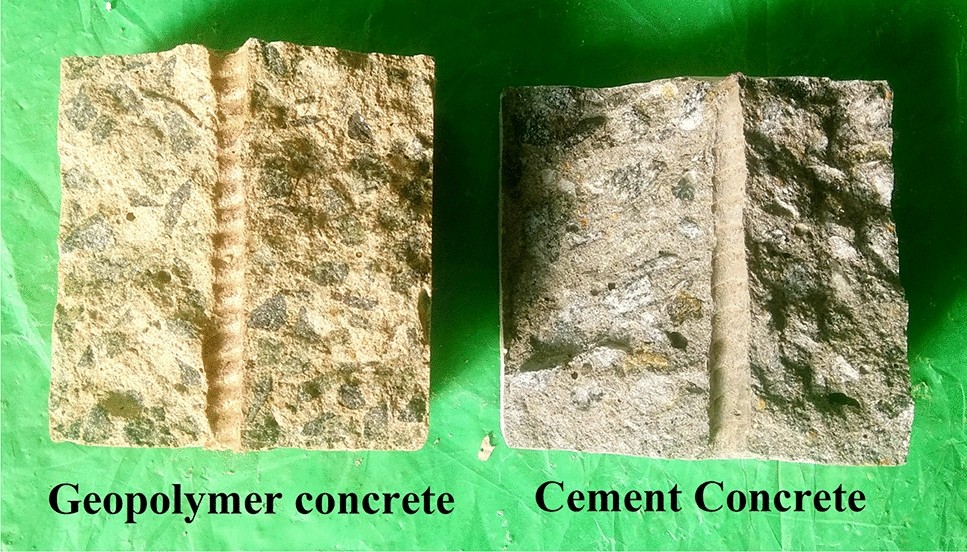
Composition of Geopolymer Concrete
The core ingredients for producing geopolymer concrete are:
- Fly Ash: A byproduct of thermal power plants, fly ash contains a high amount of silica and alumina, which are essential for geopolymerization.
- Ground Granulated Blast Furnace Slag (GGBS): A byproduct of steel manufacturing, GGBS is rich in calcium and silica, contributing to the strength and durability of the final product.
- Fine Aggregates and Coarse Aggregates: These are the same as those used in normal concrete, such as sand, gravel, or crushed stone.
- Alkaline Activator Solution: This solution, which plays a critical role in the polymerization process, is made from alkali silicates and hydroxides, often combined with distilled water. The solution activates the fly ash and GGBS, initiating the polymerization of the materials into a hardened binder.
The chemical reaction that takes place between the activator solution and the alumina and silica in the fly ash and GGBS creates a molecular chain structure, giving the geopolymer its strength and durability.
Mechanical Properties of Geopolymer Concrete
The mechanical properties of geopolymer concrete are one of the main reasons it is being considered as an alternative to traditional concrete. Several studies have shown that the compressive strength of geopolymer concrete can exceed 70 MPa (megapascals), which is comparable to or even greater than that of ordinary Portland cement concrete. Some notable features of geopolymer concrete include:
High Compressive Strength: Geopolymer concrete gains compressive strength at a much faster rate than traditional Portland cement concrete. After just 24 hours, its compressive strength can be greater than 25 MPa, and after 28 days, it can reach 60 to 70 MPa.
Rapid Strength Development: Due to the nature of the alkaline activator, geopolymer concrete reaches its final strength in a shorter period, making it suitable for projects that require quick curing times.
Low Drying Shrinkage: Geopolymer concrete exhibits much lower drying shrinkage when compared to conventional concrete. This property makes it particularly suitable for large, restrained concrete structures such as thick walls and columns, where cracking is a major concern.
Low Heat of Hydration: Geopolymer concrete generates significantly less heat during curing, which is a crucial advantage in large mass concrete works where excessive heat generation could lead to cracking.
Fire Resistance: The fire resistance of geopolymer concrete is much higher than that of traditional Portland cement concrete. This property is essential in the construction of buildings and infrastructure in fire-prone areas, offering better protection to structural elements under extreme heat conditions.
Chloride Permeability: The chloride permeability of geopolymer concrete is very low, meaning it offers better protection to embedded reinforcement from corrosion, making it suitable for marine and coastal structures.
Acid Resistance: Geopolymer concrete shows excellent resistance to acids, particularly sulfuric acid, which is known to cause severe deterioration in conventional concrete. This property makes it highly suitable for use in wastewater treatment plants, chemical industries, and other harsh environments.
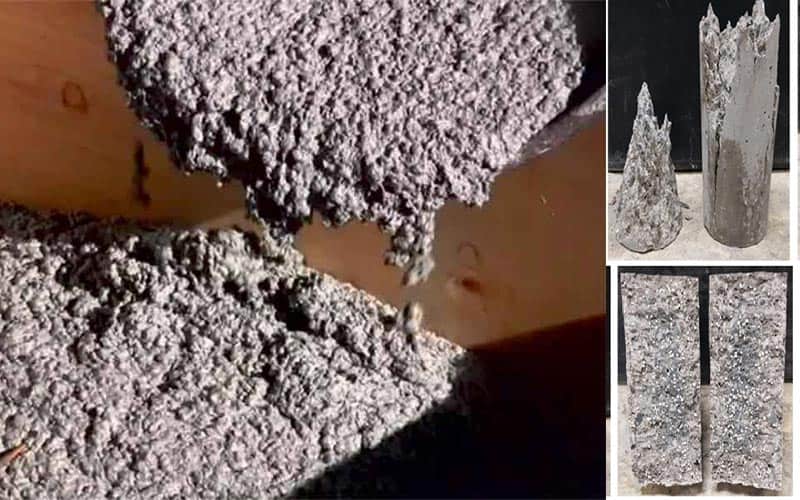
Advantages of Geopolymer Concrete
Eco-Friendly and Sustainable: Geopolymer concrete significantly reduces the environmental footprint of construction. By utilizing industrial waste materials such as fly ash and GGBS, it lowers the demand for virgin materials, reducing resource extraction and the carbon footprint of the production process.
Reduced Carbon Emissions: The production of Portland cement is highly energy-intensive and generates a substantial amount of CO2 emissions. In contrast, geopolymer concrete reduces the need for Portland cement, leading to lower carbon emissions. The production of fly ash and GGBS, the primary raw materials for geopolymer concrete, also contributes to reducing waste.
Waste Utilization: The use of industrial by-products such as fly ash and GGBS in geopolymer concrete helps mitigate the problem of waste disposal. Fly ash, in particular, is often stored in landfills, leading to environmental concerns. By repurposing it for concrete production, geopolymer concrete offers a sustainable solution for managing waste.
Durability: Geopolymer concrete is highly durable, with excellent resistance to environmental conditions such as heat, moisture, and chemical attacks. This makes it ideal for use in harsh environments, including coastal and industrial regions, where traditional concrete may deteriorate more quickly.
Cost-Effectiveness: While the initial cost of geopolymer concrete may be higher than that of Portland cement concrete, the long-term benefits, including reduced maintenance costs and improved durability, make it a cost-effective alternative for many construction projects.
Applications of Geopolymer Concrete in Building Construction
Geopolymer concrete can be used in almost all applications where traditional concrete is used, such as:
- Structural frames for residential and commercial buildings
- Precast wall panels and slabs
- Load-bearing columns and beams
- Foundation systems and footings
- Basement retaining walls with low permeability
- Fire-resistant structural components
- Green-certified and low-carbon buildings
- Cladding and architectural elements for façades
- Repair and retrofitting of existing building structures
- Thermal mass elements for energy-efficient buildings
Market Potential of Geopolymer Concrete in India
As per imarc report, the India Geopolymer Market is poised for significant growth, with an anticipated increase from USD 290.90 million in 2024 to USD 1,511.17 million by 2033, reflecting a CAGR of 20.10% during the period from 2025 to 2033. This growth is largely driven by the increasing demand for sustainable and eco-friendly construction materials. Geopolymers, which offer a low-carbon, energy-efficient alternative to traditional cement, are gaining momentum in various sectors such as infrastructure, construction, and industrial applications. India's push for sustainable development, supported by government initiatives like the Pradhan Mantri Awas Yojana (PMAY) and the Smart Cities Mission, is further boosting the adoption of geopolymer materials. Additionally, the country's rapid infrastructure development, including the expansion of national highways, is contributing to the growing use of geopolymers, particularly in road construction and building projects. The increasing penetration of geopolymer technology in industrial sectors, combined with a strong policy focus on reducing carbon emissions, is positioning the material as a key player in India’s construction and infrastructure sectors.
In terms of market segmentation, the India geopolymer market is diversified across applications and industries, including cement and concrete, furnace and reactor insulators, composites, and decorative artifacts. The primary end-use industries driving the demand are building construction, infrastructure, industrial applications, and art and decoration. Geopolymers are particularly gaining traction in sustainable construction, with increasing use in both residential and commercial real estate projects. The market is expected to see significant growth in regions such as North India, South India, East India, and West India, driven by regional infrastructure and development projects. The competitive landscape of the market is also evolving, with key players striving to meet the growing demand through innovation and collaboration with government agencies and research institutions. As India continues to focus on reducing its environmental footprint, the geopolymer market is expected to thrive, presenting new opportunities for manufacturers, developers, and technology innovators.
Conclusion
Geopolymer concrete marks a transformative shift toward sustainable construction by offering an eco-friendly alternative to traditional Portland cement. Its ability to reduce carbon emissions, repurpose industrial waste, and deliver exceptional durability makes it an essential material for the future of construction. As it continues to gain traction in various sectors, particularly in India’s growing infrastructure landscape, the demand for geopolymer concrete is set to rise. With advancements in research and increased adoption, it has the potential to redefine how we approach building projects, ensuring that future infrastructure is both environmentally responsible and resilient. Embracing this innovative material will not only contribute to reducing the environmental footprint of the construction industry but also support long-term economic and structural benefits.

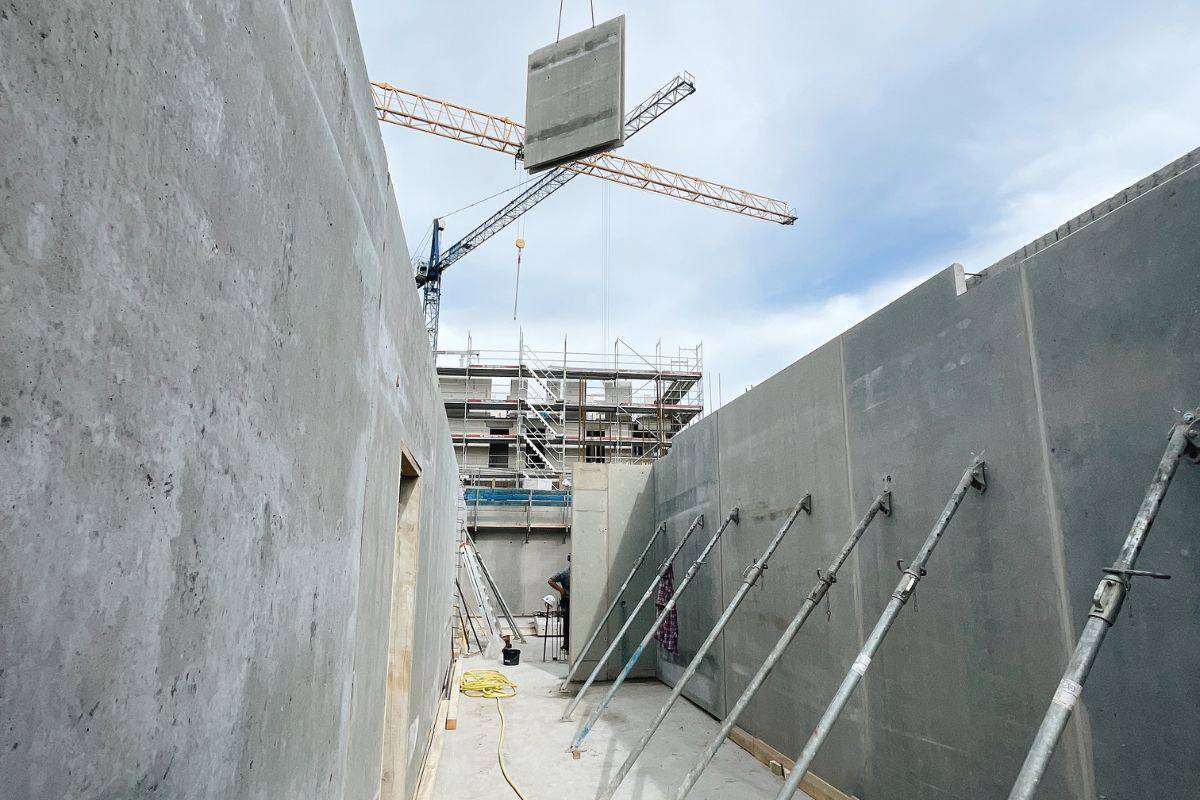


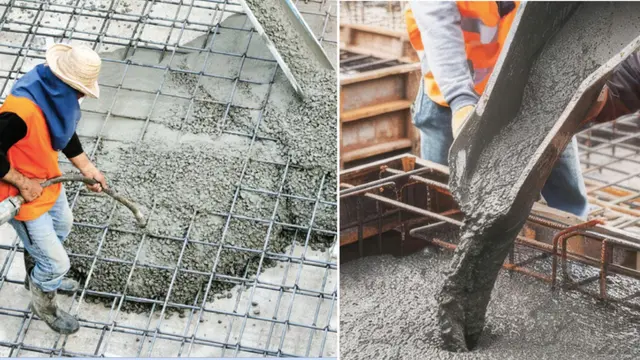
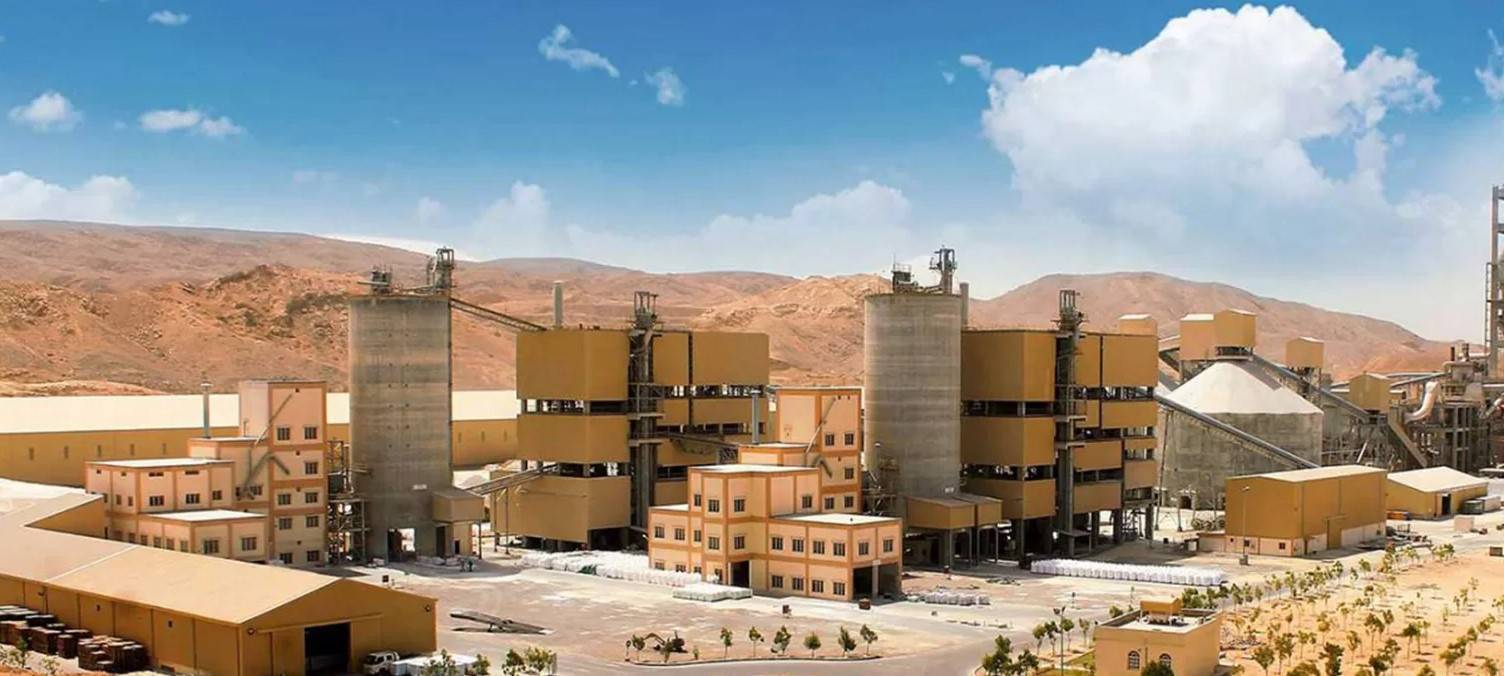

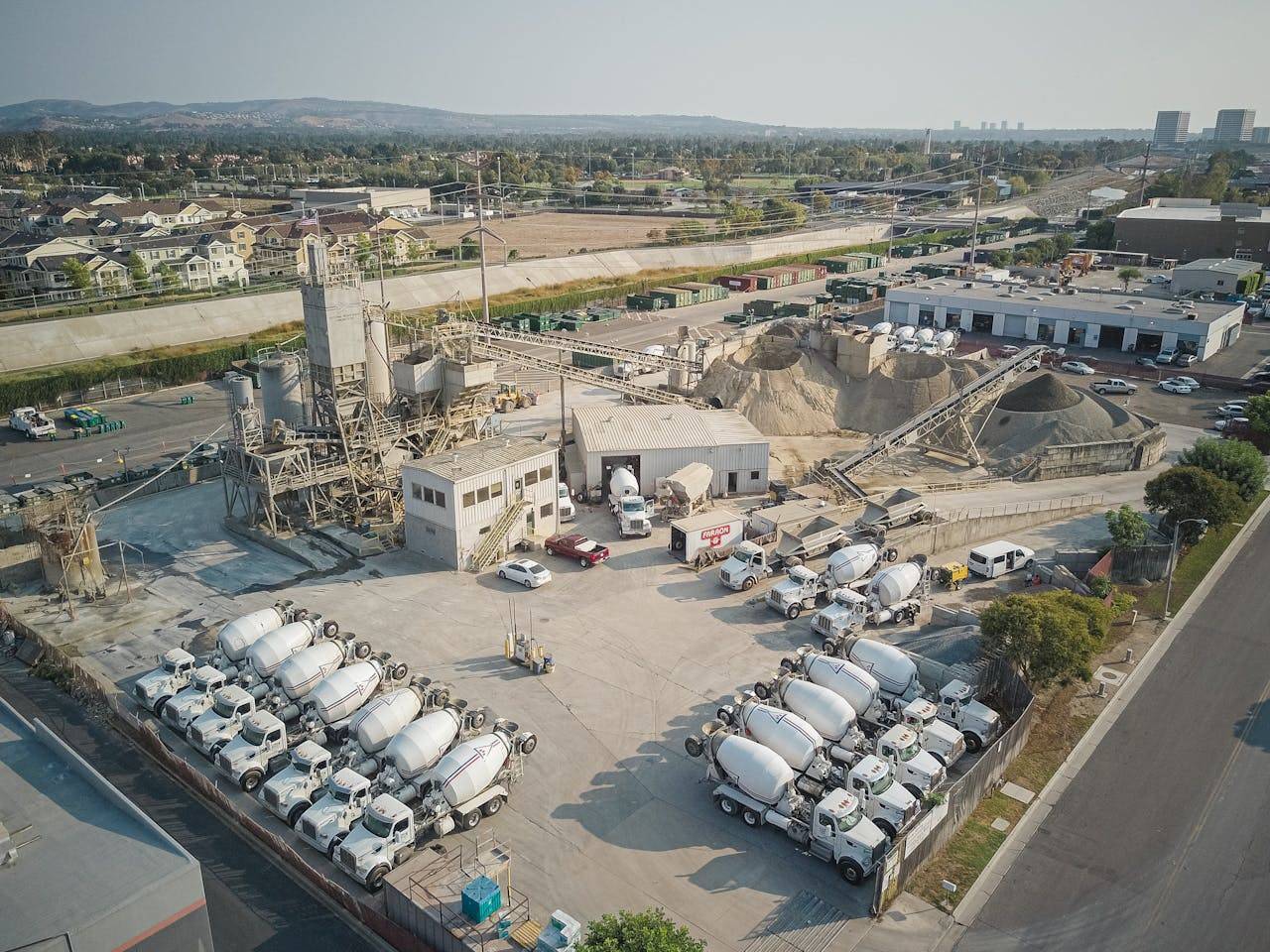

.png)